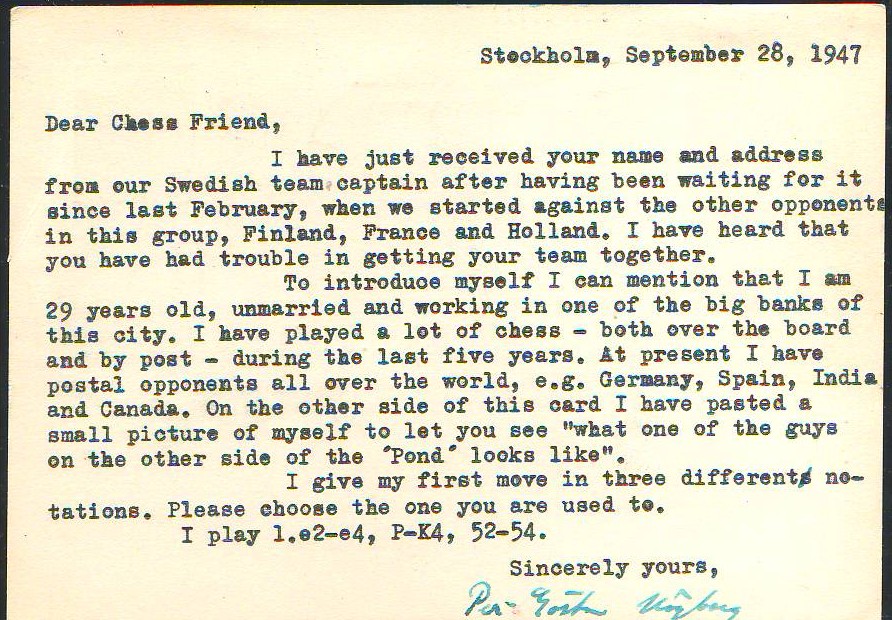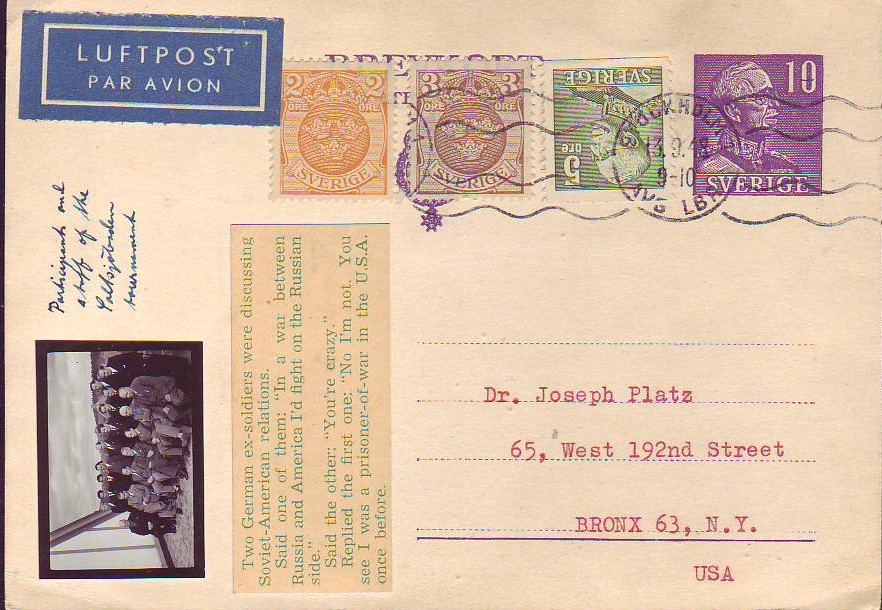
My great Uncle, Joe Platz, gave me my first lessons in chess strategy when I was eight years old. He himself had been a student of Emanuel Lasker, and I fancy that his lessons were similar to those that he had himself received.
Joe was well known in New England as someone who would win every tournament in which he completed. Joe was a doctor, and he dutifully left tournaments when summoned to deliver babies and to help his patients. Many players, I am told, hung on in lost positions hoping only that the the phone would ring summoning Dr. Joe.
Given his predicament, it is natural that Joe would play correspondence chess. I was aware from the old rating lists that Joe competed in the US Chess Federation�s postal chess tournaments. As it turns out, Joe also played in international correspondence chess competitions.
Imagine my glee a month ago when, perusing items on eBay, I found a post card sent to my Uncle from a correspondence chess competitor from Sweden. Needless to say, I won that auction. I asked the seller if he had any others and, sure enough, he had one more.
So here they are. Two cards from the same game. Of interest to chess on stamp collectors, note the postage, 20 ore, stays consistent over the course of a year between the cards. By the the 1950, 60s, and 70, it was not uncommon for inflation to change the rate once or twice in a game. And note the use of photographs on the cards. The second card contains a small photo of the participants in Saltsjobaden Interzonal in 1948 won by David Bronstein.



